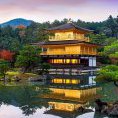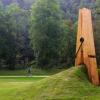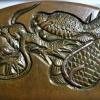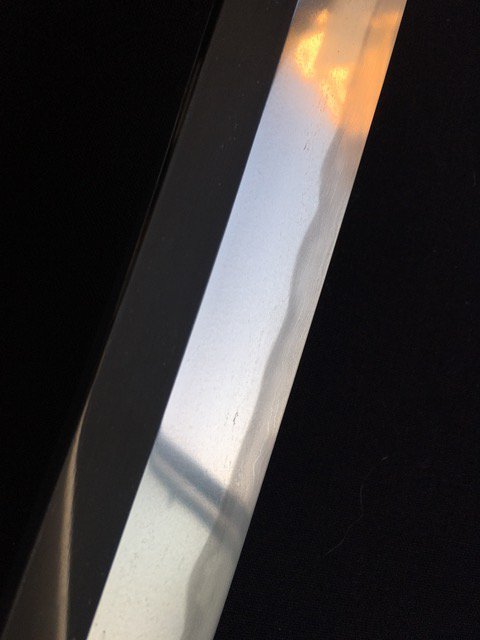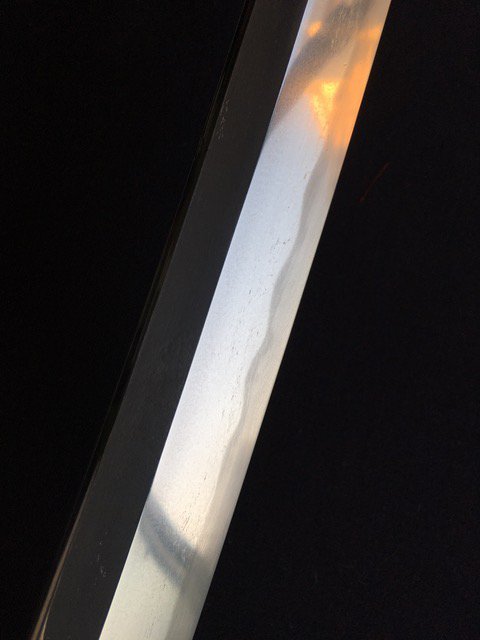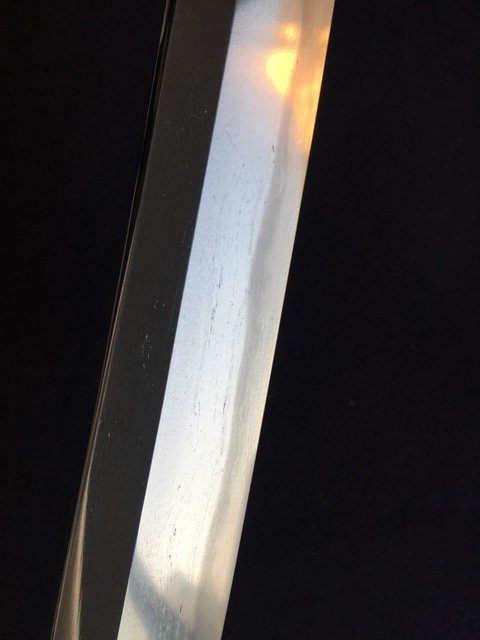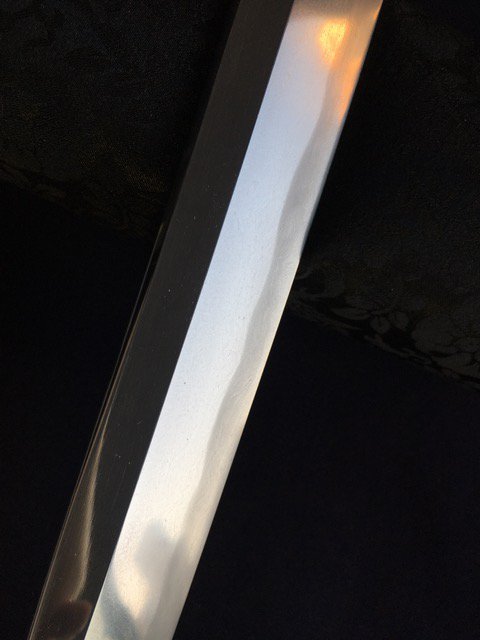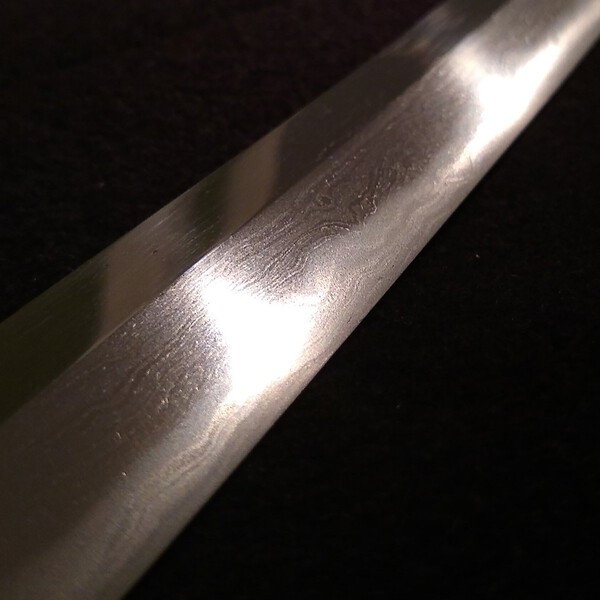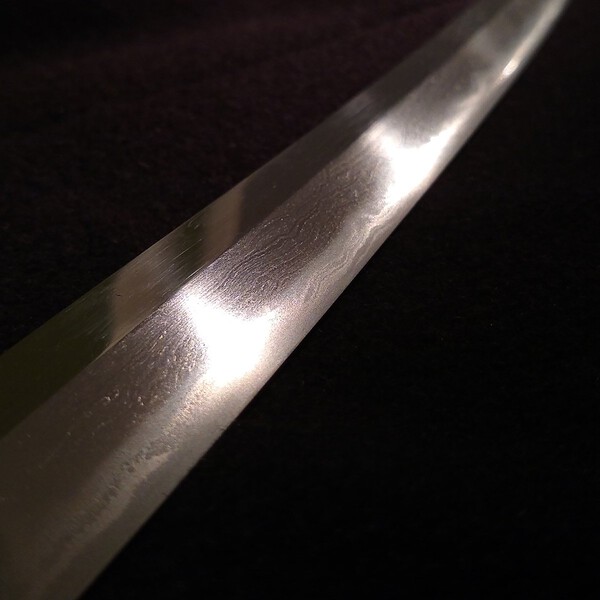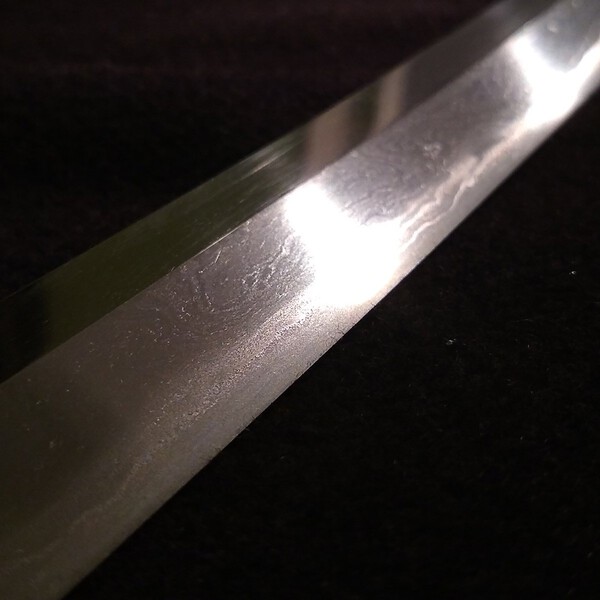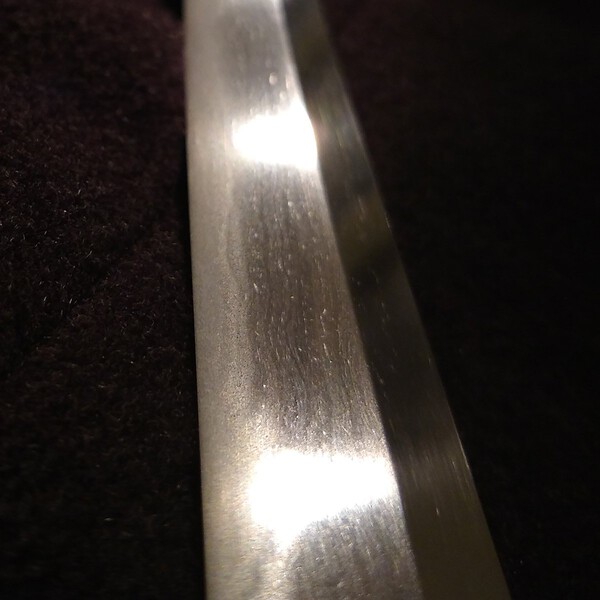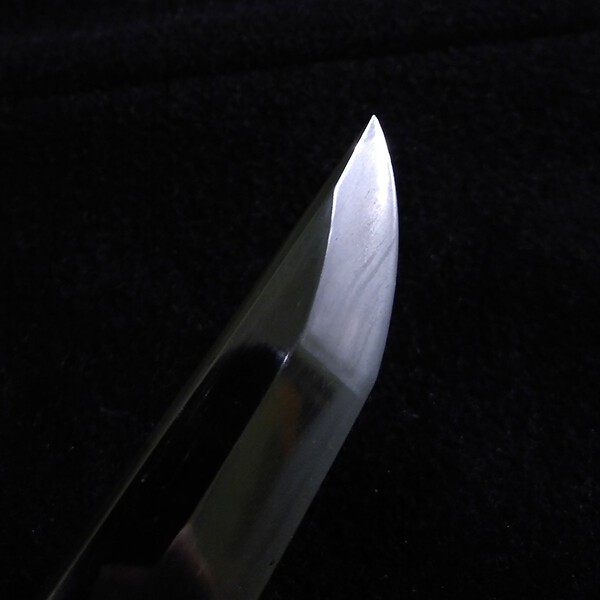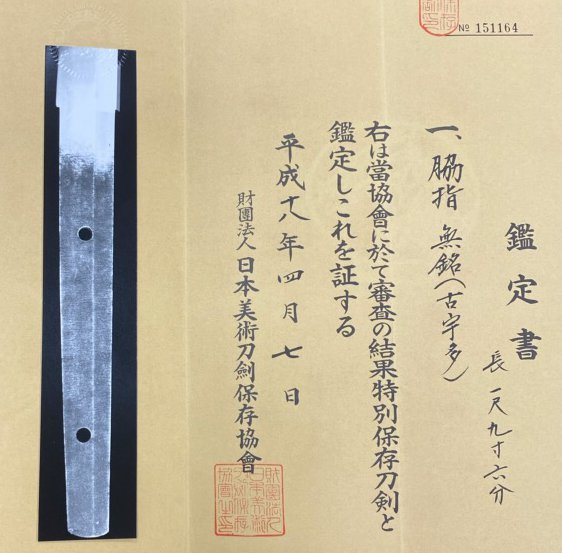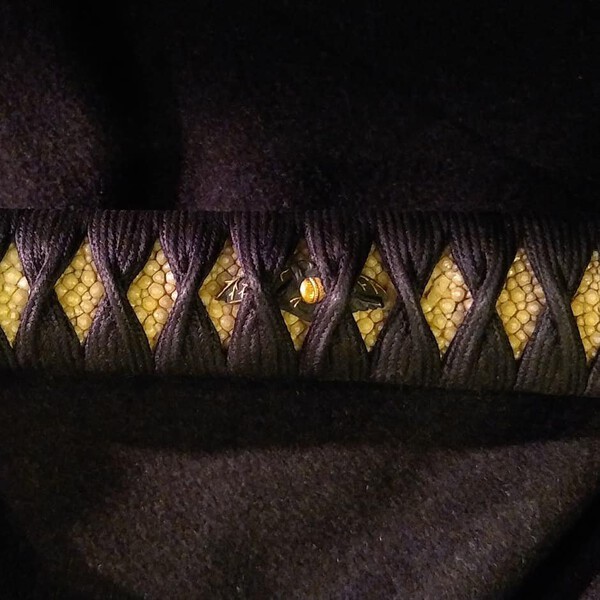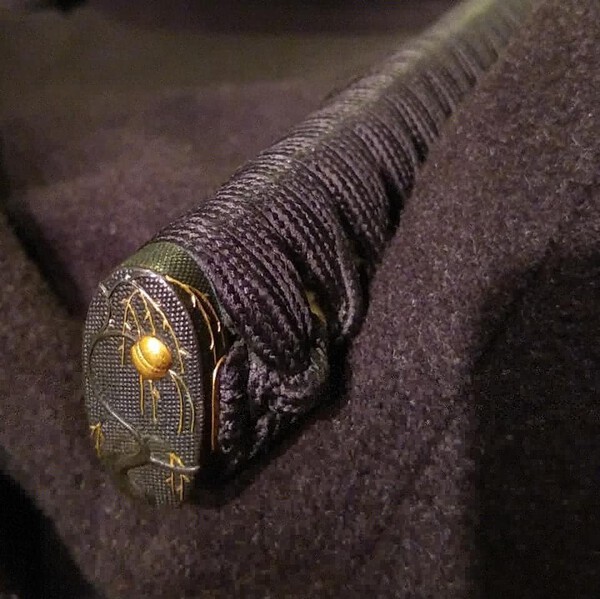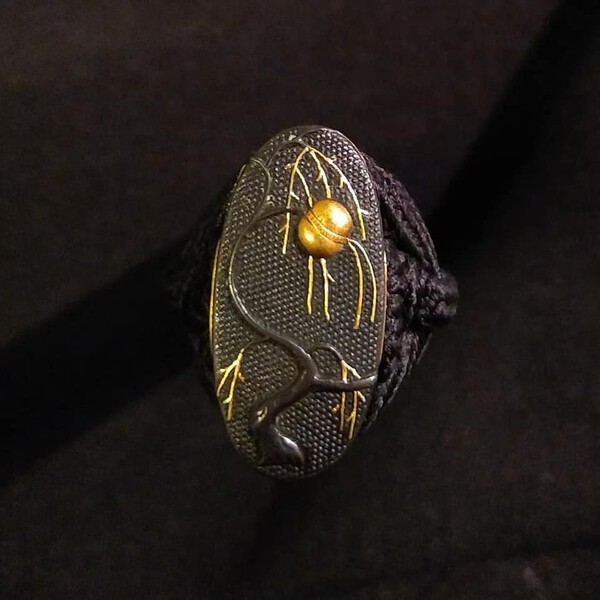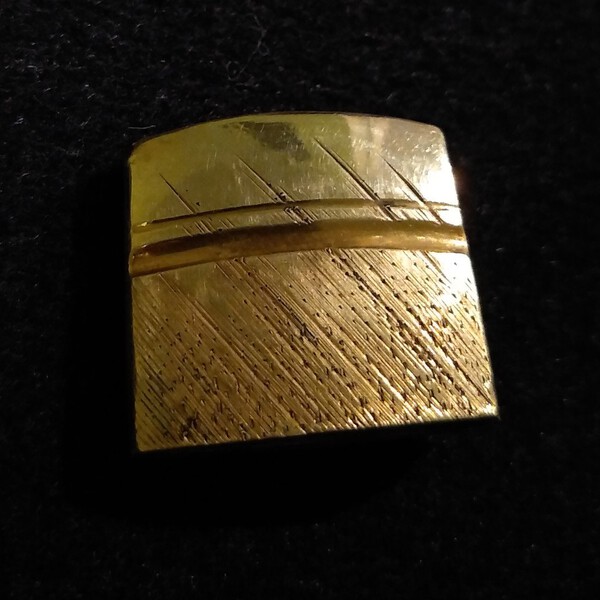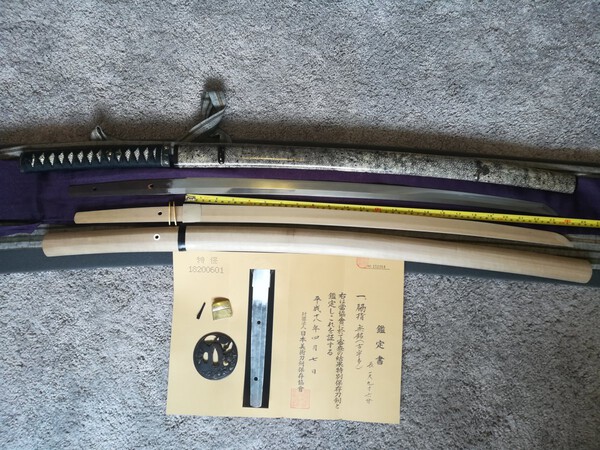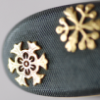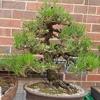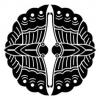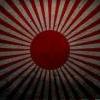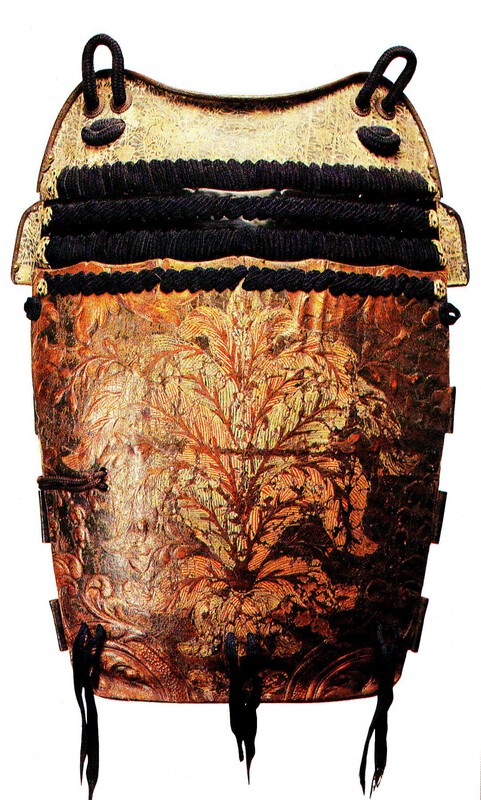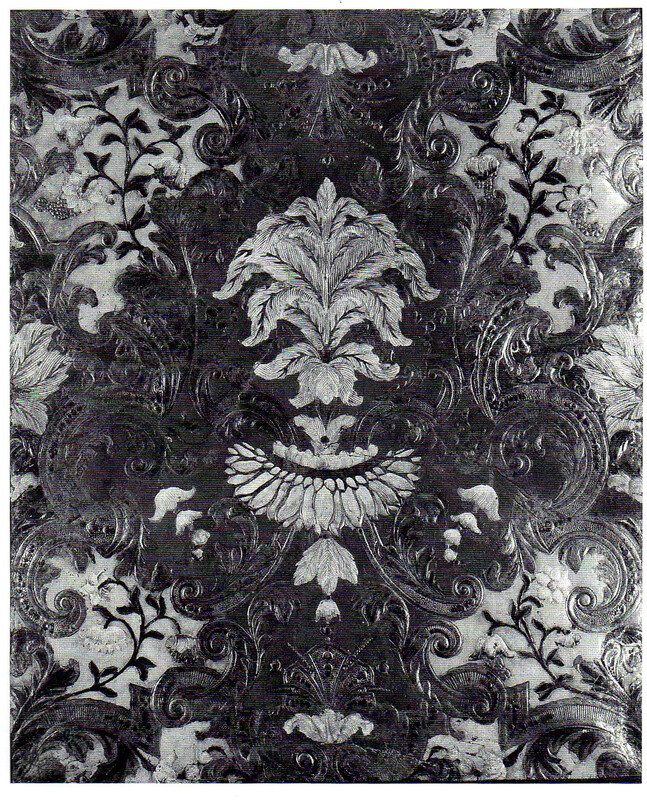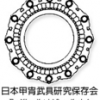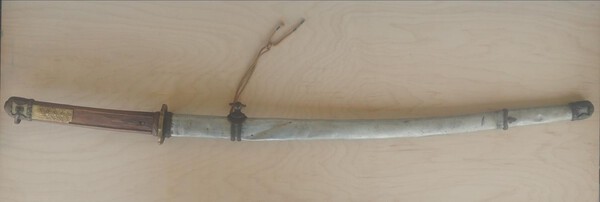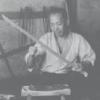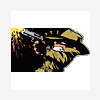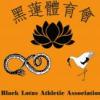Leaderboard
Popular Content
Showing content with the highest reputation on 08/10/2020 in Posts
-
Hi John This is a great question and I have asked it myself many years ago. Jussi is the best source for this but let me give it a crack. Many define the O-Kissaki as the shape that appeared in the Nanbokucho period however, there is evidence that some (very few) schools made extended kissaki before that time. The shapes of swords that came after the Mongol invasions attributed to the new shape of swords but even at the time of the early Kamakura some sword schools were experimenting with new styles. To define O-Kissaki I wish to note that I will omit the converted Naginata Naoshi blades, indeed some Naginata that were converted to larger Kissaki are wonderful and imposing in Sugata but they do not count. I will focus on swords with Kissaki that extend 4 cm and above with specific width over 2.5 cm in width. There will be Aoe blades that are longer in Kissaki but more slender (these are more extended Chu-Kissaki), I am open to the other members rebuttal on these measures. The Ideal O-Kissaki is over 3 cm in width and over 4 cm in length not exceeding 7.5 cm, in my opinion (Sadamune, Chogi, Motoshige, etc) There is evidence of Ko-Hoki (later Heian Ko-Hoki) making blades with extended Kissaki, this is a nice reference since we know that Masamune and Norishige used Ko-Hoki as a reference to their own eventual styles of Sugata, although the most beautiful Masamune (all Mumei so I leave that for another discussion) do not have overly extended Kissaki, they are just right so to say. Continuing into early Kamakura and there are very few examples from Ichimonji and Yamato that show extended kissaki but these may also be reshaped blades, hard to tell. Moving into the Mid-Kamakura we get Miike swords(love Miike myself), robust and powerful with intimidating shape that show the features of extended kissaki (still before the Mongol invasions of 1274 and 1281). But then we move to the golden age of sword constructs where almost every school begins to show O-Kissaki construction. Out of anticipation of the returning Mongol invasions no doubt, but impressive Sugata with massive Kissaki. Ichimonji (later schools), Mihara, Sairen in Chikuzen, and finally leading into the Soshu schools that really perfected the O-Kissaki and lent their skill to Soden Bizen. In my opinion the most magnificent O-Kissaki stem from Sadamune (Soshu) and then, (Soden-Bizen) Chogi, Kanemitsu, etc during the Nanbokucho. Were they preparing for another Mongol invasion, had the Japanese learnt more about armour from their enemies and then incorporated the best aspects into their construction at the time so the swords needed to answer that development? I am sure the armour groups here can answer that. What does become clear is that the next time we see the beauty of O-Kissaki after the Nanbokucho is during the Shin-Shinto period and that should be of note as to the use of such blades where Kiyomaro made outstanding Sugata that broke the status quo. In addition to O-Kissaki I think take into account the Kasane and Motohaba / Sakihaba as that tells you a lot about the robustness of the sword, for example, if you see Chogi (or Miike for that matter) it is not only about the O-Kissaki but the blade itself is wide and thick. Aoe has extended Chu-Kissaki that some mistake for O-Kissaki but this school is clear in its intention, some (few) late Nanbokucho follow the trends of Soden-Bizen and earlier blades are Chu-Kissaki and then extended Chu-kissaki and earlier ones will be Ko-kissaki. Conclusion, if you wan the best Koto O-Kissaki look at Soden-Bizen blades.4 points
-
Hi John, Jussi, everyone; Not having the time to study each post and ponder on the implications, I did skim through this page and as I had the Teiryo Yoji on my lap yesterday, this question comes at the right time. Though not actual swords the examples, or information in the book was based on one of the scrolls from (can't recall the exact years); ±800 years, yet the earliest dates described in the book don't have any O kissaki. Anyway you probably know what the book is about. Continuing; if there were much earlier examples one could imagine one of the earlier generation of Honami appraisers/polishers would've seen it and included one of those examples somewhere in the mountain of data. Then again as the book is comprised of 1/5 of the information known in the family at least around 1600, who knows what information is unknown to us now. Anyway just a thought. If i have the time I'll check it out specifically for when the larger kissaki comes in.2 points
-
I do have few examples of dated ōdachi from Kamakura period but unfortunately I lack pictures of their kissaki, so I cannot comment on those. I believe this ōdachi by Bizen smith Kunizane that is preserved in Itsukushima-jinja might be among the earliest remaining. Unfortunately I lack many measurements of the sword but long kissaki can be seen in the picture. The sword is designated Jūyō Bunkazai and it is 106,6 cm in blade length with 5,9 cm curvature. Koshirae is 181,5 cm. The sword is most likely from late Kamakura period.2 points
-
Job done. I have decided that the 'prototype' will become the permanent inserts for my (sad but loved) 95. They fit well and are functional although the final fit was way (WAY!!!) more in-depth and time consuming than the lead up work. Im happy with the result. In the end this turned out to be a custom made job (sand, measure, fit...sand, measure fit...etc etc etc)..... I really think that a complete saya (as per Jean C's video) would be easier and maybe more fun....easier anyway. What I have leaned..... The final stage can take a long long time to finalise My expression "how hard can it be" is now a known thing Correct/good tools can make or break a job But onwards and upwards...still loving it and have a job copying an 'actual' insert so we will see how that goes. Decided on Australian Red Cedar (different from Western Red Cedar). Regards Rob2 points
-
You've all given very reasonable viewpoints The reason I brought up this second sword (which by all accounts seems a weaker prospect to the Aoi one) is that after I sent it for a good polish in Japan, it in fact passed Juyo in last year's session.2 points
-
2 points
-
Works slow at the moment, hence a few sales. I will be listing an Ishido Teruhide with ww2 mounts separately. About the Uda Hirakuni. NBTHK Hozen, comes with very good quality shirasaya and nice gold foil habaki with a black shakudo finish. Dont often see o-suriage mumei Uda Muromachi with an attribution, nice to own. A very stout and healthy blade, O-suriage so must have been quite an handful when it was first made. When it first arrived it reminded me of a sword from the Nanbokucho period which leads me to think it its either the 1st or 2nd Hirakuni, the good news is there was not many listed, only four Etchu Uda in the Index of Japanese swords by Markus. For the asking price, there is lots to like about this sword. Lots of activity including bright Ji-nie that stands out, Sunagashi, ashi, Yo, Kinsugi, Nie-Utsuri The jigane is a very nice Itame with nagare, darkish as you would expect. Not easy pinning it down to one particular smith. 2nd generation mentions Jin-ie (which does stand out) ko-notare with gunome, so thats where i lean to. Some info http://www.sho-shin.com/hoku15.htm https://books.google.co.uk/books?id=46IYtI0nkiEC&pg=PA69&lpg=PA69&dq=uda+hirakuni+sesko&source=bl&ots=BRKgWaVUOv&sig=ACfU3U3edAs4uDh3WSwr4GsxfRxlrLWTKg&hl=en&sa=X&ved=2ahUKEwiJuNP2-pDrAhXztHEKHTfYAAcQ6AEwC3oECAkQAQ#v=onepage&q=uda hirakuni sesko&f=false SEE DEALER SOLD PAGE FOR BETTER IMAGES https://www.toukenkomachi.com/index_en_tachi&katana_A110819.html Nagasa 69.69cm Sori 1.8cm Moto-habe 3.30 cm (wide) Saki-haba 2.24cm Moto-kasane 0.62cm Saki-Kasane 0.35cm As mentioned. The blade is healthy without serious kizu, a few small scratches here and there, a couple of spots in the hamon towards the hamachi and a bit of slight loose grain that looks a lot worse in images than it does in hand. I will add the images that i asked the dealer to take with regards to that. SOLD Will add images as i go, camera just packed in so will have use the iphone. Im no use at photography so bare with me, or using iphones for this !. If your on watsapp i can send you more pics or a video maybe. The pictures with the orange light are the ones the dealer sent to me.1 point
-
In the chaos of closing on a new house, packing, cleaning, showing and working through the sale of my current residence I found myself a nice treat. A beautiful blend of Soshu and Yamato as well as a splendid peach tree(my favorite motif along with plum) koshirae as icing ontop. Strong correlation to Etchu Norishige and Yamato Shizu Kaneuji places it in early nanbokucho/late kamakura. Special thanks and big thank you to Ray. http://swordsofjapan.com/project/ko-uda-in-koshirae/ https://nihontoclub.com/smiths/NOR312 https://nihontoclub.com/smiths/KAN4161 point
-
1 point
-
1 point
-
I think the biggest issue when trying to find dated examples so far back in history is the scarcity of items. I believe I have gone through most of the highly regarded remaining Japanese swords (of course I'll keep making new finds previously unknown to me and new items pop up too with new shinsa), and I just counted and I was able to find in total only 38 dated tachi that have pre-1300 dating. I might have accidentally skipped one or two when trying quickly to find them but that is miniscule database and you cannot make too general conclusions from that. Signed and dated swords (that are confirmed by expert opinions) have the upside of eliminating uncertainity. While I do have extremely high amount of confidence in Japanese experts, mumei swords always leave some leeway. I might have told sometime earlier that when visiting Tokyo National Museum in 2017 they had a very big and wide sword on display during exhibition (I visited twice during my stay but they had rotated the exhibition items during that and I couldn't check the info of it accurately, as I was overwhelmed seeing so many awesome items on my first time visiting there), of course I immidiately thought that is an obvious Nanbokuchō shape, and felt good about my guess. I was shocked that it was actually Heian period Ko-Bizen sword. Unfortunately I don't have any pics of the item, and I haven't yet been able to track it down. I just remember it so well as I was confident in my guess across the room but got totally humbled.1 point
-
1 point
-
1 point
-
1 point
-
1 point
-
The name looks right to me. Well, I should say its too tough for me to read through the corrosion, but I found another example of this smith on the internet, and a few of the characters look like a match, so I'd say you got it right. I think the date "might" be Showa 17, followed by 卯月 (April). Again, its too badly corroded to be sure. A closer picture, or a different angle might help.1 point
-
Andy is a stand up guy. I've asked him questions and he's always been 100% upfront about any of his listings.1 point
-
Just to make sure everyone is aware of this recent revelation by Nick, Type 100 Officer's Swords were inspected from the beginning in 1940. This is the reason we are seeing inspection marks on this sword so early and not on Type 98s. It may be necessary to separate Type 98 and Type 100 markings for this reason. "Legally rebutting the existence of a Type 3 Army Officer's Sword" https://www.warrelics.eu/forum/f216/legally-rebutting-existence-type-3-army-officers-sword-708745-post2095801/#post20958011 point
-
I live a few miles from Andy Quirt and can vouch he always seems to hold the customers interest above locking down a business deal.1 point
-
Eric, It's a way of numbering things without the numbers getting to high. If a guy makes 10,000 blades over 7 years, he could number them from 1 to 10,000 over time. Or he could start over at some predetermined number, like 4,000. So the first 4,000 numbers are without kana. Once he is ready for blades 4,001, he leads with a katakana and starts over a "1". Once that line gets to "Kana" 4,000, then he picks the next katakana in series and starts at "1" again. Mantetsu did this pervasively, keeping most lines of numbering in 3-digits.1 point
-
Possibly it is simply because of numbers of army officers vs numbers of navy officers? We see many more army gunto on the market than kaigunto, so we would come across less kai with mon. Maybe one of our members that specializes in kai would have some insight. Didn't we have someone who's avatar was "Kaigunto"? (tried a search but came up empty) I have one on a kai with a mumei Muromachi blade. Ha, now you're going to get flooded with examples!1 point
-
I would also highly recommend Andy Quirt as well, if you are interested in a entry level sword. His site is Nihonto.us1 point
-
I would be amazed if the blade wasn't a chinese copy. I agree with Ray. Josh you seem to have an interest in Nihonto so I hope this is just an experience to learn from and you stick around and further your knowledge and interest. Good luck. Greg1 point
-
1 point
-
When I see a blade like this on a dealer website, I suspect it has already been submitted to Juyo shinsa and failed. The shinsa numbers indicate that there must be many such "near-miss Juyo" blades out there, that show up for sale as TH (which is a requirement for submission). Someone once recommended to me that this was a desirable category of blades for collecting -- near-Juyo quality at a much lower price.1 point
-
I once owned a set of fuchigashira with the very same theme and thought about that question too. Although I never found a concrete explanation, I assumed the theme was symbolic. As you probably know, Empress Jingū is said to have given birth to Ōjin after Emperor Chūai had already passed away (in the literature it is said to be three years, but it probably three seasons, which would equate to nine months - the average term of pregnancy). During this time, Minister Takenouchi played a pivotal role as Empress Jingū's advisor. As the closest male influence upon the young Ōjin, he may have even fulfilled the role of a father figure, which might explain why he is nursing the infant Ōjin. Moreover, Takenouchi also acted as an adviser to Ōjin, when Ōjin succeeded his mother to became emperor. In light of this, Minister Takenouchi could be said to have figuratively raised Ōjin from a child to an emperor. This, however, is mere speculation on my part, and if you have the time you might want to look at the Kojiki and the Nihon Shoki, which are the primary sources for the lives of Empress Jingū and Emperor Ōjin. Perhaps something more literal is contained there.1 point
-
I do not think Katayama Ichi are the least well regarded. I would reserve that honour for Iwato and others. In fact if you see an Ichimonji nagamaki or naginata it almost always gets attributed to Katayama. There are some very good blades in that school, particularly by the founder Norifusa. I have not visited the Aoi website and am going by what Ray posted above in terms of images. For Katayama Ichi I would want to see a much more slanting , saka choji hamon. Notwithstanding, there are some where the choji and ashi are upright only.1 point
-
The brothel that became the Chicken Ranch opened in La Grange, Texas, in 1844. Run by a widow known as "Mrs. Swine".It's also a great track written by Billy gibbons of ZZ Top.1 point
-
Thanks guys, those vibes are definitely making it across the continents 🙂 Home now, bedridden and starting the long recovery. But I'm here, and at your service. 😷1 point
-
Welcome Logan. You will find many Japanese kitchen knife fans here too. Btw, just curious...La Grange sounds like one of our South African surnames here?1 point
-
This sword, although attributed to Katayama Ichimonji is not in great shape. I have done a few highlights where there are openings in the steel and one Umegane where the polish is a definite risk (Umegane can "pop"open). I think the shape is nice, however, in this condition it has a few things against it for Katayama like the length being under the Goldilocks 70cm minimum for Juyo candidates in this category. The nakago is ok for a sword this old (the mekugi ana could have been finished better). On polishers I think Kenji Mishina is amazzing for Edo and later blades, there are other polishers that can work on older swords and I would recommend asking Paul Martin for his advice. Yanagawa is a polisher that can help with very small openings and does magic, do not ask me how, I have no idea but the work is outstanding. I would not bet this sword for Juyo at all, the Mumei Katayama that pass Juyo are near perfect (Kensen) in condition. Recently the Juyo panel in Japan has become very strict and puts great emphasis on the condition of the blade first and foremost. If someone buys this blade it will be to enjoy it as it is.1 point
-
1 point
-
1 point
-
Number 16 is actually Chinese made production sword, Cold Steel O-Tanto. The reason why the tang is "overpolished" is due to it being made c. within the last 10 years and Cold Steel using a stamping method as they put a serial number of the item on the tang. The stamp has been filed off on this...1 point
-
Welcome L.... It is nice to have someone from my Provence joining the board. There is a sword club at the Japanese Canadian Cultutral Centre (JCCC) located at 6 Garamond in Toronto. When we were not burdened with COVID 19 we meet at the JCCC on Saturdays. We have about 5 meetings a year.1 point
-
This new section is a trial category for now, and is intended to be a place to identify and get basic info on all non-traditionally made Japanese swords. These include machine-made and partially machine made swords between 1876 through 1945. If you know the sword to be Gendaito or Shinsakuto (fully traditionally made from tamahagne during or after the war) then those still belong in the Nihonto section. However if you are unsure, then this section can be of some use. Swords that are found to be Nihonto will be moved to the appropriate section. Conversely, if you post a sword in the Nihonto section and you can't find the post later, perhaps it was identified as a Showato and moved here. For the purposes of this forum, and in line with modern day convention used by collectors and dealers, the following classifications are used: Showato :- Military swords that are made from modern steels, or machine made or partly machine made. Illegal to be imported into Japan. Gendaito :- Military swords that are fully forged and folded and water tempered/quenched from tamahagane. These are legal to be imported into Japan, and are considered Nihonto Shinsakuto :- Modern traditionally made swords by qualified smiths in Japan, produced after the war until today. Nihonto :- Although merely meaning "Japanese sword" this is used to denote a Japanese sword that is fully forged by a smith using tamahagane and is legal to be imported into Japan under the relevant laws. Please note that this forum is specifically for Japanese swords. Swords from other countries and modern fakes or copies are beyond the scope of this forum, and posts about them will be deleted. This section is intended to assist with identification and basic info on the various military swords of Japan such as Kyu-Gunto, Kai-Gunto, Shin-Gunto, Police swords etc etc. As per the other sections, the main focus of this forum is NOT pricing, and posts dealing solely with price enquiries will be deleted. Members will, if possible, try and assist with vague pricing info if possible, but this will always be as part of a larger request and is not reliable or expected. The focus of this forum will never be prices, and members are advised to search prior sales and places such as eBay for pricing guidelines. Translation requests belong in the section dedicated to that. If the discussion evolves further into specifics of the sword itself, then it may be moved here at the discression of the moderators. Lastly, for those that are dedicated Nihonto enthusiasts and collectors: This section is best avoided completely, as it is beyond the scope of this collecting theme. It is intended to make the other sections more specialized and "pure" without these swords appearing there, and as such should improve the focus of those forums. If there is any doubt as to which category a sword belongs, it will remain the perogative of the moderators as to whether to move it here or not. This section may evolve over time, and is merely a trial for now to see how it functions and whether or not it is successful. - Admin -1 point
-
I'd say it was a reasonable success eleven years on.1 point
-
Tell him your seriously considering the offer but your concerned about authenticity.1 point
-
This Kaga go mai dou is interesting in having Dutch leather fastened to the front plate. It seems that Maeda Tsunanori, the fifth daimyo, following a visit to Kyoto, was so impressed by the refinement of the capital that he encouraged potters, lacquerers and metalworkers to come to Kanazawa and work for the Han. In 1637 he installed agents organised by a certain Hanawa Ichirobe, in Hirado and Nagasaki to purchase materials such as leather, woollen cloth, velvet, ivory and so forth from the Dutch and English. These materials were incorporated by the Haruta armourers then working in Kanazawa into their productions, hence the dou illustrated. You can imagine my surprise when walking around the Rijksmuseum in Amsterdam to see a wall covered in the same moulded, gilded and painted leather as my dou. I managed to meet the relevant curator who took me up into the attic and there in a storeroom he pulled out a sheet of the exact same leather, which the Dutch used for covering furniture, boxes and stretched on frames as a substitute for wood panelling on walls. Not only that but he also has the original the carved wooden mould that the leather on my armour had been made in. What a coincidence. Ian Bottomley1 point
-
1 point
-
According to the research carried out by Orikasa Sensei amongst the Maeda papers in Kanezawa, only Haruta and independent armourers were employed in the Han until 1801 when the Myochin Muneyoshi was taken on. This dou seems to be by a Myochin Munetoshi whose real name was Sukekuro. He was granted a stipend for 3 people in 1826 and died in 1837. Interestingly this is one of the few Kaga armours that does not have the upper edges of the plates shaped. Ian Bottomley1 point
-
1 point
-
All, A recent topic from a newbie who got stung made me think of posting a thread focused on a little self-deprication. What was your worst purchase? Was it a Chinese fake? An auction you got a little too zealous in bidding? A gimei blade you were confident was legitimate? I'll post mine when I'm in front of my computer, but it was a Chinese fake of a kyu gunto - I only "invested" $700 in an invaluable learning opportunity, so perhaps it was my most profitable buy...1 point
-
0 points
-
My worst purchase ever was my first purchase ever in 1994. It was a Kane Mitsu Gunto, in type 94 mounts, that I bought from the Ebay dealer Augustcornell (who will forever eat through a straw if ever i find out who he really is). It was described as razor sharp, in good polish, and in great shape. Back in the day digital camera pics were very low resolution so it was hard to tell otherwise. When it came, the saya was taped together with black electrical tape (could not see in pics as saya was black) handle was broken, Nakago was ground with a sander and then reblued to look like it had an aged patina, and the blade looked like it had been worked over with a rock. I contacted the seller who claimed it must have been the wrong item that was shipped to me and that I should return it for a refund....... Which i did.... for a refund that never came. He made off with my $450 USD, which was a ton of money to sophomore in high school, and i never heard from him again. This was before paypal and buyers insurance so i was up the creek with no paddle. Total loss. All these years later and it still gets my blood boiling when i think about it. Kurt K0 points
-
Easey peasey. I bought a fake sword from China knowing full well it was fake, but, wanted to find out just how bad in hand. 20$ and 80$ shipping, some such. It came and was just about the worst fake you could possibly expect. The scabbard had been dyed, stained with an organic stain that must have been water buffalo dung. It stank to high heavens, so badly, that when I gave it to my son-in-law, I don't know, to lop off reindeer antlers or something, his mother told him to get it out of their shed. My worst, right there. John0 points

